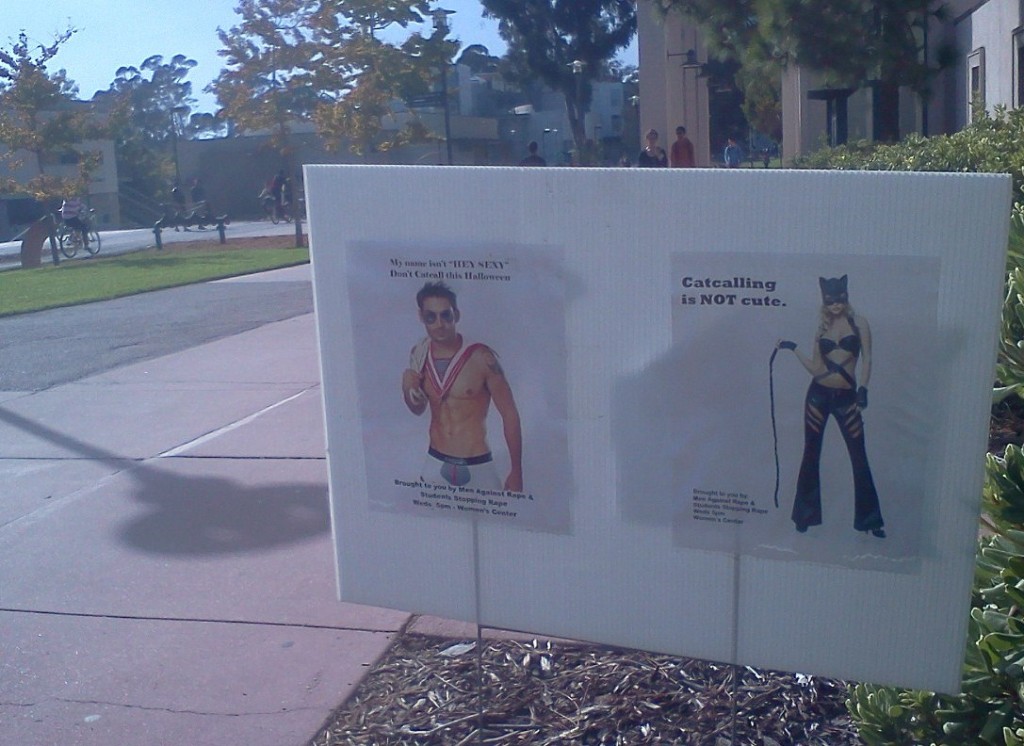By: Taylor Kuether, Minnesota, USA, SSH Blog Correspondent

While it is one of my favorite holidays, Halloween is also hard. As a feminist against street harassment, I think women should be able to wear whatever they want and not be harassed for it, but as a feminist against cultural appropriation and heteronormativity, I think there are some costumes that are hurtful, degrading, and demeaning.
Consider the popular skeleton costume with a tape measure around the waist, “playfully” called “Anna Rexia.” Such a costume trivializes a real disease that hurts thousands of people. Or what about dressing up as sexualized Disney princesses, which both infantilizes women by dressing them up in costumes traditionally reserved for very young girls and hurts said young girls by showing them highly sexualized versions of otherwise innocent children’s characters. And how many countless costumes are there that – literally – objectify women by turning them into objects? Sexy USB Port (with matching USB Stick for your boyfriend…)? Sexy Brick House (and, of course, Brick Layer for the guy…how clever…)? And of course, Sexy Hamburger, which literally turns a woman into a piece of meat.
Yes, these costumes are harmful, reducing women to sexualized objects. Even worse, though, are costumes that make fun of other cultures. Halloween is a time to dress up and pretend to be someone you’re not – but why do we need to try on other races and nationalities for size? Some examples include Native American, Mexican, and Asian “costumes,” all shown here. Commodifying an entire culture to dress up in it for Halloween devalues the richness and history of that culture.
So just don’t do it. Pick something else, please.
I value creative, clever, or funny Halloween costumes. I value Halloween costumes that allow you to dress up as someone you admire (Audrey Hepburn in Breakfast at Tiffany’s, anyone?). And I especially appreciate costumes that bend gender binaries – rather than the predictable presentation of Paul Bunyan and Babe the Blue Ox, characters from one of my favorite American folk tales, last year it was I who dressed as Paul Bunyan (faux-beard and all!) and my then-boyfriend went as Babe. This year, I’m excited to dress up as Tobias Funke from the popular TV series “Arrested Development,” and one of my gal pals is going as his wife Lindsey. It’ll be fun and funny, and I know we’ll have a great time and make some people laugh.
That’s what Halloween should be about. It’s a holiday that’s meant to be fun – for children, that means trick-or-treating, for adults, that means dressing up and handing out candy or attending a Halloween party. It’s not meant to be serious or stuffy, but that doesn’t mean we shouldn’t carefully consider our costume choices.
This Halloween, I implore you to pick the funny, clever costume over the “sexy” one. Try it; you’ll probably end up having a blast.
Taylor Kuether is a senior journalism student at University of Wisconsin-Eau Claire in northwestern Wisconsin. She has previously written for The Washington Post and Minneapolis’ Star Tribune, worked as a reporter at her city’s daily newspaper, The Leader-Telegram, and its arts and culture publication, VolumeOne, hosted a local-music centered radio show on Wisconsin Public Radio, and worked as Editor-in-Chief at her student newspaper, where she enjoyed writing biting, slightly rant-y columns about feminist issues.

